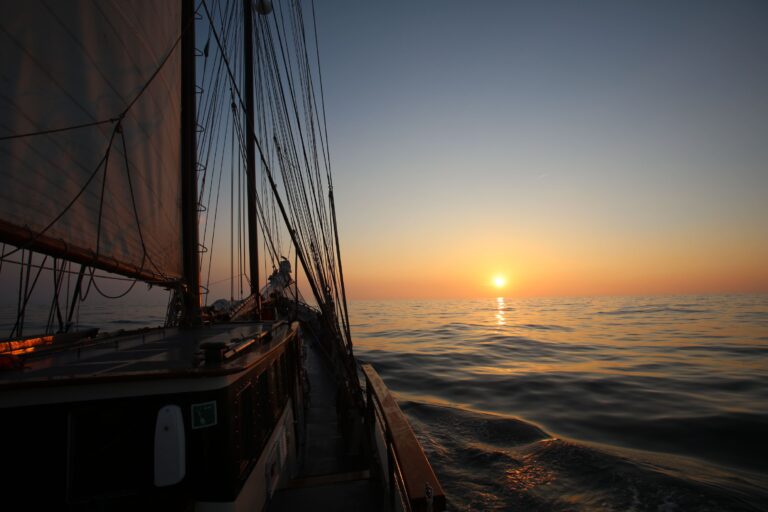The North Sea, a not always easy piece of navigable water, lies in northwestern Europe and borders the countries, of the UK, Norway, Denmark, Germany, the Netherlands, Belgium and France. The North Sea is a fringe sea of the Atlantic Ocean. Through the Skagerrak, the Kattegat and the Sound, the North Sea is connected to the Baltic Sea. North of the North Sea is the Norwegian Sea. The sea thus lies between the European continent, from the Scandinavian Peninsula, and Britain, and passes to the southwest through the Strait of Dover, in the English Channel, into the Arctic Ocean, which forms the eastern part of the North Atlantic. The North Sea has a total area of 575,000 km² and measures an average depth of 94 metres. The maximum depth of the sea, in the Skagerrak, is 725 metres. South of the Dogger Bank, the depth is mostly less than 50 metres.
In the part of the German Bight and off Denmark, you have a beautiful Unesco World Heritage Site. A well-preserved tidal area of several islets and halligs with many shallow channels, gullies and drying sandbanks in between. In front of the Netherlands lies the Unesco heritage area “Waddenzee”, which is also one of the major tourist attractions, due to its beautiful and from the sea, easily accessible islands Texel, Vlieland, Terschelling, Ameland and Schiermonnikoog. The southern North Sea, together with the adjacent English Channel, is the busiest shipping region in the world and is connected to the Atlantic Ocean.
According to Köppen’s climate system, the entire area occupied by the North Sea has a temperate rainfall climate and is characterised by variable wind and weather conditions. Everything is possible here, from storms and high waves to perfect sailing conditions and total calm.
The traditional saiiling vessel fleet that regularly sails the North Sea ranges from seagoing flat-bottomed ships that sail the wide coastal waters, but can also drop dry between the islands on the sandbanks, to larger international sailing ships that sail around Norway, Iceland, Scotland, England or towards the Biscaya across the Atlantic Ocean.
The North Sea offers unprecedented natural phenomena and a very wide variety of animal life. From seals to, harriers, guillemots, gannets and puffins. But also many fish species, from porpoise to the most impressive whales. You will also find a rich animal life on sandbanks released during low tide, from crabs to lobsters, periwinkles, razor clams, oysters, to cockles and mussels.

